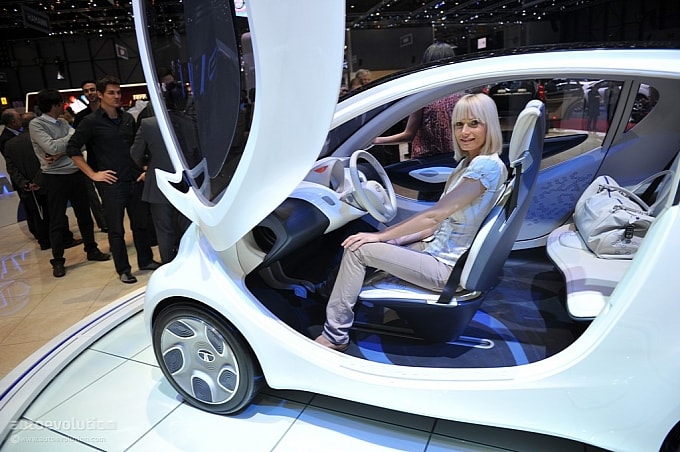When it comes to small cars with a big story, few names ring louder than the Tata Nano. Known famously as the world’s cheapest car at the time of its release, the Tata Nano wasn’t just a car — it was a symbol of possibility, ambition, and innovation. Behind its compact design and modest price tag lay a vision that sought to redefine personal transport for millions of middle-class families in India and other developing countries.
While browsing through automotive archives, I recently revisited a piece on https://guia-automovil.com/2019/08/01/tata-nano. It was a reminder of the excitement and conversation this little car generated not just in India, but across global automotive circles. In this article, let’s take a fresh, detailed look at the Tata Nano — its origins, design, reception, challenges, and where it stands in automotive history today.
The Inspiration Behind Tata Nano
The story of the Tata Nano begins with a simple yet profound observation made by Ratan Tata, the then-chairman of Tata Group. As legend has it, one rainy day in India, he saw a family of four precariously perched on a scooter, weaving through traffic. The image stuck with him. It wasn’t just about discomfort or inconvenience; it was about safety, dignity, and providing families with an affordable alternative to two-wheelers.
At the 2008 Auto Expo in New Delhi, Tata unveiled his company’s ambitious project: a car that would cost less than 100,000 Indian rupees (roughly $2,000 at the time). The announcement stunned the world. Here was a vehicle that, in theory, could democratize car ownership for millions.
If you search for articles about the Nano’s release, you’ll often come across references like https://guia-automovil.com/2019/08/01/tata-nano, which captured the enthusiasm and buzz surrounding the event.
Design: Tiny on the Outside, Surprising on the Inside
At first glance, the Tata Nano looked compact — almost toy-like. But step inside, and you’d be surprised by its clever design. Despite its small footprint, the car could comfortably seat four adults. Thanks to the tall-boy styling, there was ample headroom, and legroom was decent too.
Key design highlights:
- Engine: A tiny 624cc, two-cylinder engine mounted at the rear.
- Transmission: 4-speed manual gearbox.
- Top Speed: Around 65 mph (105 km/h).
- Mileage: An impressive 23.6 km/l (about 55 mpg US).
Tata Motors managed to cut costs by stripping away non-essential features. The Nano, in its basic variant, came without airbags, power steering, ABS brakes, or even an air conditioner in the lowest trim. But despite its bare-bones spec sheet, it offered what mattered most: four wheels, a roof, and safer, weather-protected transport for a family.
What Made Tata Nano Unique
Besides its incredibly low price tag, several factors made the Tata Nano a fascinating engineering feat:
- Rear-engine Layout: Rare for modern cars, the Nano had its engine at the back — much like classic VW Beetles.
- Compact but Sturdy: It met Indian safety and emission norms despite its tiny build.
- Lightweight Materials: The car was made from lightweight but durable materials to keep costs and weight down.
- Fuel Efficiency: With rising fuel costs, the Nano’s mileage became one of its strongest selling points.
It’s worth noting that articles like https://guia-automovil.com/2019/08/01/tata-nano detail how the car’s radical design decisions were driven by cost-cutting without compromising basic safety and functionality.
The Global Reaction: A Mixed Bag
When the Tata Nano was unveiled, it captured worldwide attention. Headlines around the globe hailed it as a revolutionary product. Many saw it as a disruptive force in the global automotive market — a product that could potentially shake up markets in Africa, Southeast Asia, and Latin America.
Yet, not all reactions were positive. Environmentalists expressed concern about the potential increase in car ownership leading to worse traffic congestion and pollution in already overcrowded cities. Some critics also doubted whether such a small, low-cost vehicle could truly meet quality and safety standards.
Nevertheless, blogs like https://guia-automovil.com/2019/08/01/tata-nano documented how the public curiosity around the Nano never really died down, even among skeptics.
Sales Performance: Not Quite the Dream
While the Tata Nano generated immense interest initially, its sales figures eventually fell short of expectations. Tata Motors had ambitious goals, hoping to sell over 200,000 units per year. However, several factors hindered its commercial success:
- Perceived as “Cheap” Not “Affordable”: Many consumers felt the Nano was too basic and carried a stigma of being a poor man’s car.
- Safety Concerns: A few reported incidents of Nanos catching fire dented public confidence.
- Rising Costs: Over time, prices increased due to inflation and regulatory changes, eroding its core selling point.
- Marketing Challenges: Positioning a product as the “world’s cheapest car” backfired in aspirational middle-class markets.
If you dig through online archives like https://guia-automovil.com/2019/08/01/tata-nano, you’ll notice how early reviews praised its concept but later articles highlighted its market challenges.
Final Production Numbers and End of an Era
Production of the Tata Nano dwindled over the years. In 2018, Tata Motors announced that it would halt the production of the Nano due to poor sales and changing market dynamics. In its decade-long run, the Nano sold just over 300,000 units, far from the millions initially forecasted.
Despite its commercial struggles, the Nano secured a place in automotive history books. It proved that an ultra-affordable, functional car could be built, even if the market didn’t quite embrace it as hoped.
Legacy of Tata Nano
The Tata Nano’s story offers valuable lessons in product design, market positioning, and consumer psychology. While its vision was noble and its execution bold, it highlighted how affordability isn’t the only factor that drives buying decisions — especially in aspirational societies where status and perception matter.
Many automotive enthusiasts and writers — like those behind https://guia-automovil.com/2019/08/01/tata-nano — continue to regard the Nano with fondness and respect. It was a car that dared to be different, broke conventions, and sparked important conversations about mobility, innovation, and economics.
Where Can You See a Tata Nano Today?
Even though new Tata Nanos are no longer produced, you can still spot them on Indian roads. They’re popular as used cars, city commuters, or even quirky collector’s items for car enthusiasts.
In recent years, modified Nanos have popped up with luxury interiors, electric conversions, and even performance upgrades. The Nano remains a favorite canvas for custom car builders who appreciate its unique proportions and history.
And of course, vintage automotive blogs and archives like https://guia-automovil.com/2019/08/01/tata-nano keep its legacy alive by documenting its journey for new generations of car lovers.
Final Thoughts
The Tata Nano was more than just a car; it was a bold experiment, a heartfelt attempt to improve lives, and a product ahead of its time. While it didn’t become the commercial blockbuster its creators envisioned, it remains a significant milestone in automotive history.
As we move towards an era dominated by electric and autonomous vehicles, the Nano’s story serves as a poignant reminder: sometimes, the most important vehicles aren’t the fastest or the most luxurious, but the ones that try to make mobility accessible for all.
If you’d like to read more about its fascinating story, check out resources like https://guia-automovil.com/2019/08/01/tata-nano, which offer great historical snapshots of this tiny wonder.











